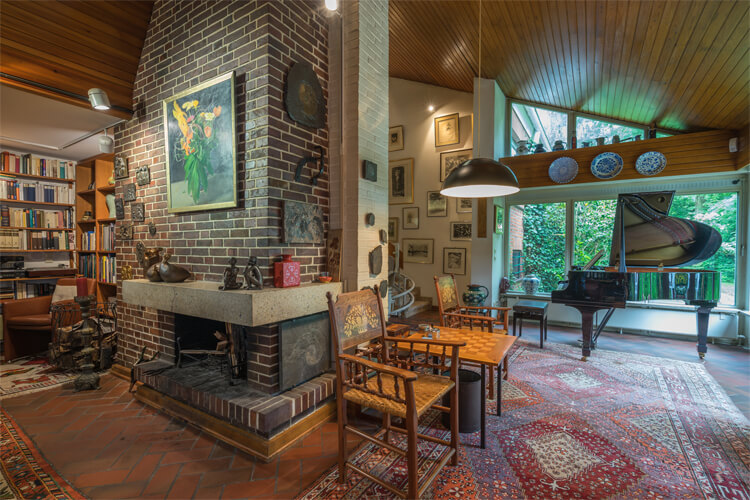Helmut Schmidt in Hamburg
He was born in Hamburg and he died in Hamburg. Helmut Schmidt lived in Hamburg for over 96 years. He always remained faithful to his home, the Free and Hanseatic City of Hamburg. Yes, Schmidt was Chancellor of Germany and a statesman. But he was also a Hanseatic institution. And he left many traces in the city.
Where did the young Helmut go to school? Who dubbed the Police Senator the “Lord of the Floods”? Why did the APO (extra-parliamentary opposition) demonstrate against the parliamentary party leader? What did the Chancellor get up to at the races? And what places in Hamburg recall the freeman of the city today? You can find the answers to these questions and many more in our interactive Schmidt-Map, which features 60 entries in total.
“The typical Hamburg impudence, in which you could still hear traces of his youth in Barmbek, was as much a part of him as the natural elegance of the freedom-loving Hanseatic burgher,” said the Mayor of Hamburg, Olaf Scholz, in November 2015 at the state funeral in St Michael’s church for Schmidt, a freeman of Hamburg.

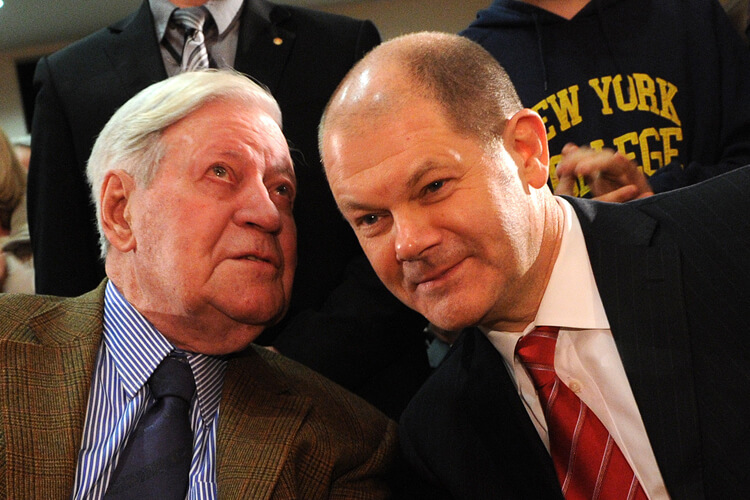
Helmut Schmidt made a name for himself early on as a doer and a crisis manager in the Hamburg floods of 1962. At the time, he was Hamburg’s Police Senator (minister). Schmidt earned recognition and respect in the city for his hands-on coordination of the response to the catastrophe including involving the army, and without wasting any time on arguing about responsibilities. The legend of Helmut Schmidt was born.
Loki and Helmut Schmidt lived in Langenhorn, Hamburg for half a century. The Schmidts moved into the house at 80 Neubergerweg in 1961; it functioned as a kind of unofficial second seat of government, together with the Chancellor’s bungalow in Bonn. Schmidt’s friends, among them Giscard d’Estaing and Henry Kissinger, were regular guests. The King of Spain, Juan Carlos, and the Polish head of government, Edward Gierek, were visitors. The Soviet head of state, Leonid Brezhnev, caused a sensation in the quiet residential area on the edge of Hamburg when he visited Hamburg on 6 May 1978 at the end of a three-day state visit. In the middle of the Cold War, Loki and Helmut Schmidt deliberately chose to use the visit to demonstrate everyday middle-class life.
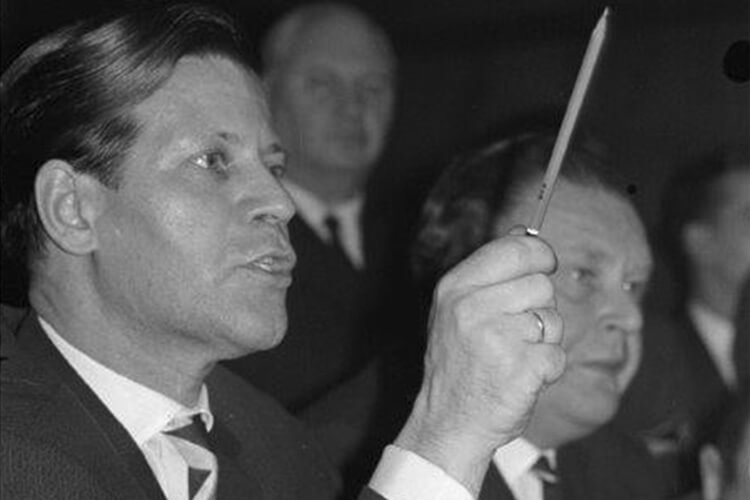

Helmut Schmidt was a citizen of the world, but he never sought to deny his origins. He always remained rooted in the “sleeping beauty”, as he dubbed Hamburg in 1962 in a critical anonymous article in Die Welt. For decades, “Schmidt Schnauze” (Schmidt the lip), as he was called as a Bundestag member on account of his sharp rhetoric, acted as a moral authority. As an elder statesman and author of over 50 books, Helmut Schmidt achieved unparalleled popularity. His understanding of economics was acclaimed worldwide.
From 1983 until his death, Schmidt regularly made his mark as a joint publisher of the weekly newspaper Die Zeit. In this role, too, he continued to be a critical commentator on his home city into his old age. The “Langenhorn oracle” – as the Frankfurter Allgemeine Zeitung affectionately dubbed him – always got a hearing in Hamburg.
It was Helmut Schmidt’s last wish that the state funeral ordered by the President of Germany should take place here in the “Michel” (St Michael’s church), where the people of Hamburg had already bade farewell to his wife Hannelore “Loki” Schmidt five years earlier. There were 1,800 invited guests – including friends and contemporaries from all over the world, such as the former President of France, Valéry Giscard d’Estaing, and former US Secretary of State Henry Kissinger – at the funeral in Hamburg on 23 November 2015. All of the guests joined the German President and Chancellor to honour Helmut Schmidt the statesman. Thousands lined the streets as the procession made its way from the Michel to Schmidt’s final resting place in Ohlsdorf Cemetery. The people of Hamburg united in paying their last respects to the city’s most prominent son.
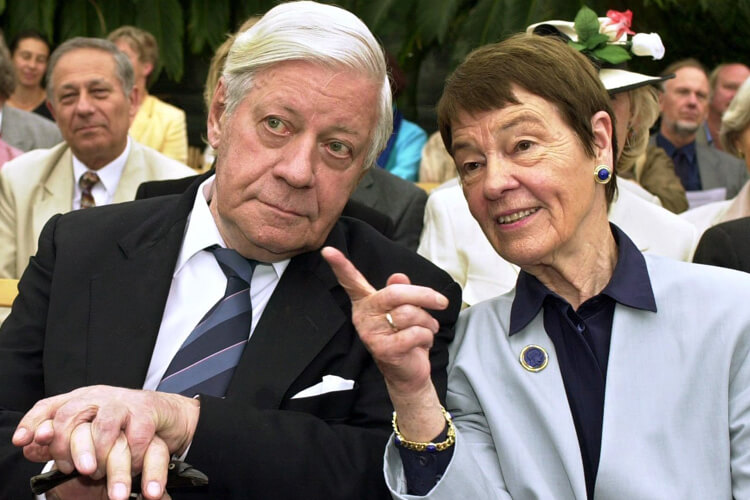
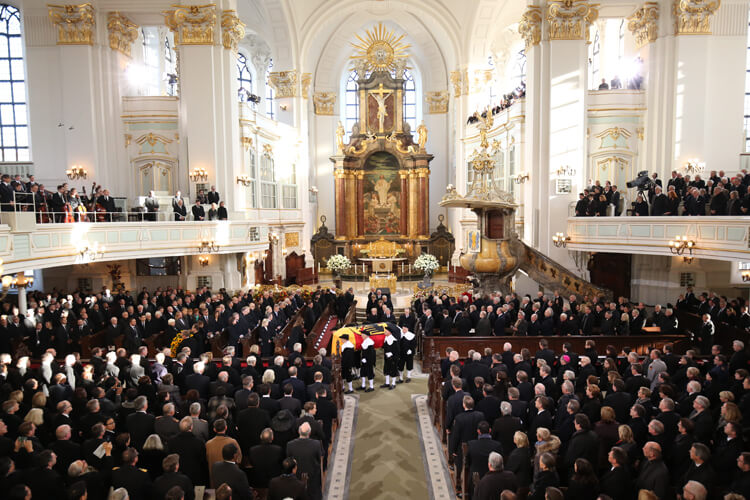
There are plenty of reminders of Loki and Helmut Schmidt in Hamburg. The University of the German Armed Forces was renamed the Helmut Schmidt University (see photo) back in December 2003. In 2012 a grammar school in the Wilhelmsburg district was named after him, as was the auditorium at the Bucerius Law School.
Since November 2016, Hamburg Airport’s official name has been “Hamburg Airport Helmut Schmidt”. An exhibition in Terminal 2 is dedicated to the statesman and Hamburg resident who lived in the airport’s neighbourhood.
The City of Hamburg also recognized the work of Loki Schmidt by giving her the Freedom of the City. Her commitment to protecting endangered plants is continued by the Loki Schmidt-Stiftung that she established. The botanical garden is also named after the naturalist, as is the Loki-Schmidt-Schule, a school in nearby Othmarscher Kirchenweg.


The Helmut und Loki Schmidt-Stiftung is based at the couple’s home in Langenhorn. The archives and library, built next to the house, can be used by researchers and other interested parties. A virtual tour makes it possible for anyone to explore the Schmidts’ home. As laid down in their will, it is to be preserved unchanged.
Since January 2016, the building housing the offices of the weekly newspaper Die Zeit has been called Helmut-Schmidt-Haus. The Bundeskanzler-Helmut-Schmidt-Stiftung has been based just around the corner at Kattrepel 10, in the UNESCO World Heritage Kontorhausviertel district since mid-2017. Here, in the heart of the city, the Stiftung and the Helmut-Schmidt-Forum have built a space for political education and societal debate. This is where new ideas for the future begin.
The new exhibition, “Schmidt! Living democracy”, which opened in June 2021, highlights Helmut Schmidt the person and his life’s work in a journey through almost 100 years of German and international contemporary history. At the heart of the story is Schmidt’s big focus: democracy. The exhibition’s goal is to stimulate interest in the man himself and to answer questions such as: Where did he have his roots? What drove Helmut Schmidt? Which of his ideas are still relevant today and for the future?

